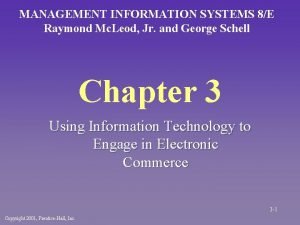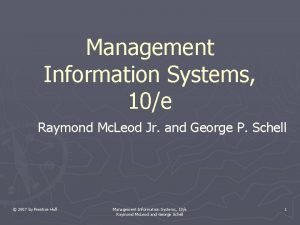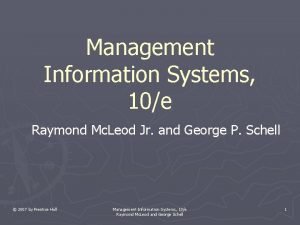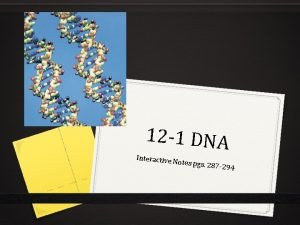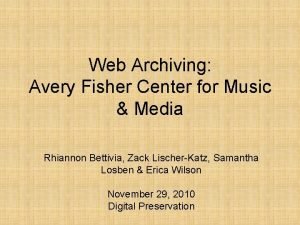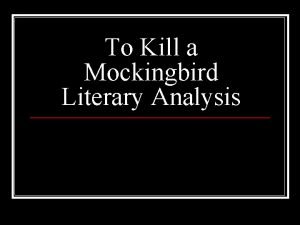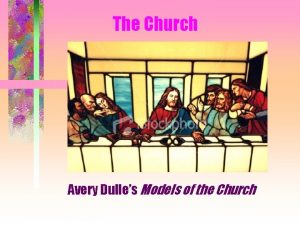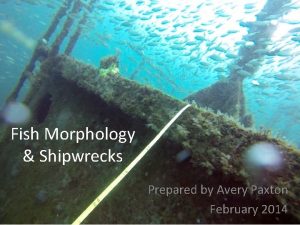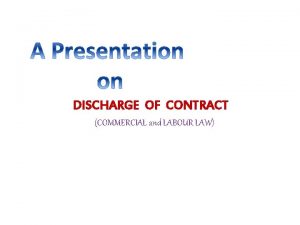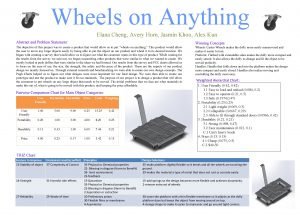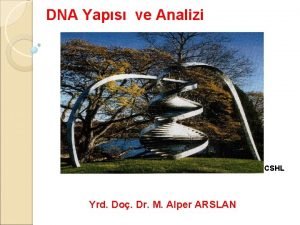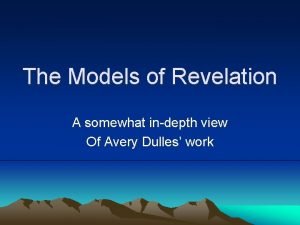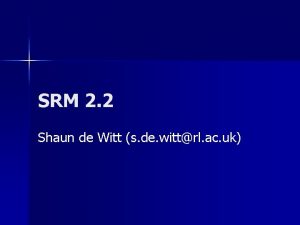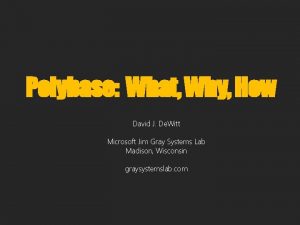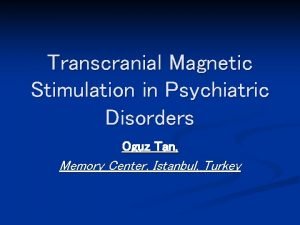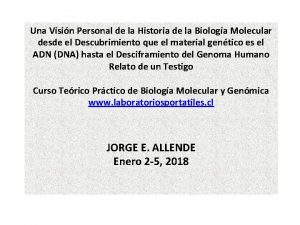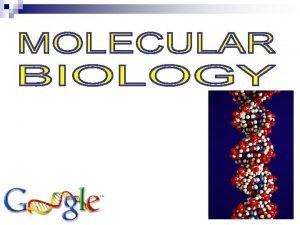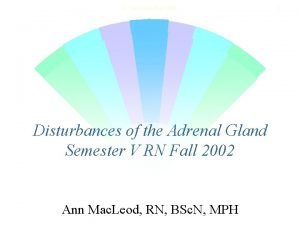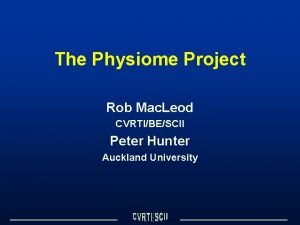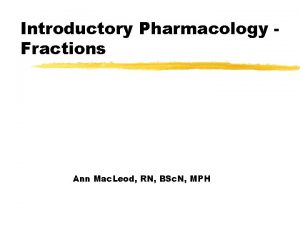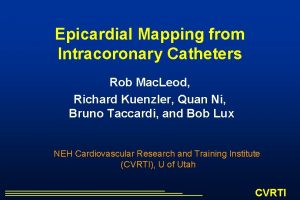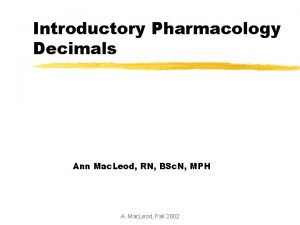Avery Mc Carty and Mac Leod Experiment What

























- Slides: 25

Avery, Mc. Carty, and Mac. Leod Experiment What were their conclusion? Mice were given deadly bacteria with enzymes that destroyed … Carbohydrates Lipids Proteins RNA DNA

S-Type S-Type Carbohydrates Lipids Proteins RNA Destroyed Destroyed Conclusion: DNA was the transforming factor! DNA is the molecule of inheritance

Learning Outcomes Content • Explain which experiment demonstrated that DNA was the molecule of inheritance • Investigate theories of replication Process • Conclusion to experimentation Benefit • Explain how experimentation can make leaps forward in our understanding.

3 proposed theories of how DNA replicates. . Any ideas to test these? Take an educated guess of which model and WHY!

Cell Transfer N 15 sole source of nitrogen for many generations Collect and analyze DNA Prediction Conservative All heave labeled DNA Semi conservative Not Relevant Transfer cells to N 14 and Allow cells to divide only once Collect and analyze DNA Prediction Conservative First generation ½ labeled with only heavy label ½ labeled with N 14 Semi conservative All DNA hybrids N 15/N 14 Allow cells to divide a second time Collect and analyze DNA Prediction Conservative Only one heavy DNA 3 DNA N 14 Semi conservative ½ DNA N 15 ½ DNA N 14

Meselson – Stahl Experiment • To answer this question Meselson and Stahl exploited the differences between N 14 and N 15 – N 15 is a heavy isotope with one extra neutron – The difference in mass creates a difference in density – This difference in density can be seen when centrifugation techniques are employed


DNA (helicase) unwinds to form 2 templates (RNA) primer is then bound to the starting DNA site. Begin of replication, an enzyme called DNA polymerase binds to the (RNA) primer, which indicates the starting point for the replication. Occurs at several locations on DNA strand DNA polymerase can only synthesize new DNA The DNA polymerase can only travel on one side of the original strand without any interruption (3’ to 5’). Since the DNA replication on the lagging strand is not continuous, the replicated DNA is fragmented with fragments added by the enzyme ligase. Semi-conservative replication!

Activity – Artists Easel • Now draw the parts for each part I have described.

Self Check • Compare what I’ve drawn to your own diagram/pictures. .

DNA Replication From this discovery the mechanism of how DNA replicates was proposed. . . • Begins as DNA unwinds (helicase) • Two strands open forming Replication Forks (Y-shaped region) • New strands grow at the forks Parental DNA Molecule 5’ 3’ 3’ Replication Fork 5’ 11

DNA Replication • DNA polymerase can only add nucleotides to the 3’ end of the DNA • This causes the NEW strand to be built in a 5’ to 3’ direction 5’ 3’ Nucleotide DNA Polymerase RNA Primer 5’ Direction of Replication 12

DNA Replication • As the 2 DNA strands open at the origin, Replication Bubbles form • Meaning DNA replication occurs at several locations Bubbles copyright cmassengale 13

Synthesis of the New DNA Strands • The Leading Strand is synthesized as a single strand from the point of origin toward the opening replication fork 5’ 3’ Nucleotides DNA Polymerase RNA Primer 5’ 14

Synthesis of the New DNA Strands • The Lagging Strand is synthesized discontinuously against overall direction of replication • This strand is made in MANY short segments It is replicated from the replication fork toward the origin Leading Strand 5’ 3’ DNA Polymerase 5’ 3’ Lagging Strand RNA Primer 3’ 5’ 15

Lagging Strand Segments • (Okazaki Fragments) - series of short segments on the lagging strand • Must be joined together by an enzyme Ligase DNA Polymerase Okazaki Fragment RNA Primer 5’ 3’ 3’ 5’ Lagging Strand copyright cmassengale 16

Joining of Okazaki Fragments • The enzyme Ligase joins the Okazaki fragments together to make one strand DNA ligase 5’ 3’ Okazaki Fragment 1 Lagging Strand Okazaki Fragment 2 3’ 5’ 17

Replication of Strands Replication Fork Point of Origin 18

Question: • What would be the complementary DNA strand for the following DNA sequence? DNA 5’-CGTATG-3’ copyright cmassengale 19

Answer: DNA 5’-CGTATG-3’ 3’-GCATAC-5’ copyright cmassengale 20

Activity • Add a series of diagrams/cartoons which explain the terms

Proofreading New DNA • DNA polymerase initially makes about 1 in 10, 000 base pairing errors • Enzymes proofread and correct these mistakes • The new error rate for DNA that has been proofread is 1 in 1 billion base pairing errors 22

Semiconservative Model of Replication • Idea presented by Watson & Crick • The two strands of the parental molecule separate, and each acts as a template for a new complementary strand • New DNA consists of 1 PARENTAL (original) and 1 NEW strand of DNA Template Parental DNA New DNA copyright cmassengale 23


 How does avery’s adoptive mother describe who avery is?
How does avery’s adoptive mother describe who avery is? Rick domingo
Rick domingo Ray leods
Ray leods Ray leods
Ray leods Ray leods
Ray leods Mc leod syndrom
Mc leod syndrom Avery's experiment
Avery's experiment The real macbeth
The real macbeth Mac mac o kok dac
Mac mac o kok dac Nyu avery fisher center
Nyu avery fisher center Mr. avery to kill a mockingbird
Mr. avery to kill a mockingbird Slidetodoc.com
Slidetodoc.com Avery dulles models of the church chart
Avery dulles models of the church chart Fish morphology worksheet answers
Fish morphology worksheet answers Avery v bowden
Avery v bowden Disney channel bella thorne dyslexia
Disney channel bella thorne dyslexia Avery cheng
Avery cheng James dewey watson
James dewey watson Setting of roll of thunder
Setting of roll of thunder Avery dulles models of revelation
Avery dulles models of revelation Dr. michael witt
Dr. michael witt Polybase limitations
Polybase limitations Avery george
Avery george Mr avery direct characterization
Mr avery direct characterization Oswald avery descubrimiento
Oswald avery descubrimiento Quantum meritum
Quantum meritum


